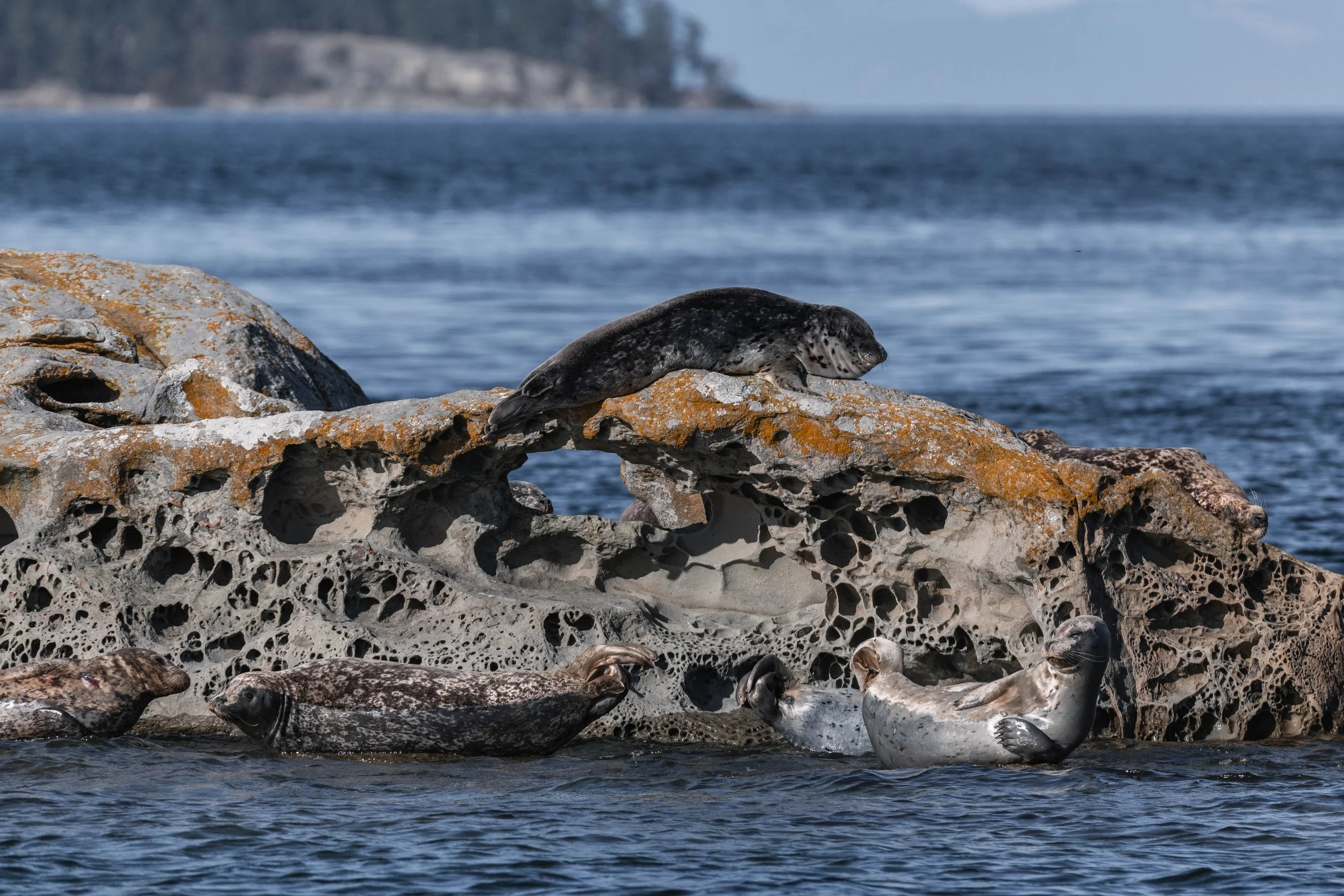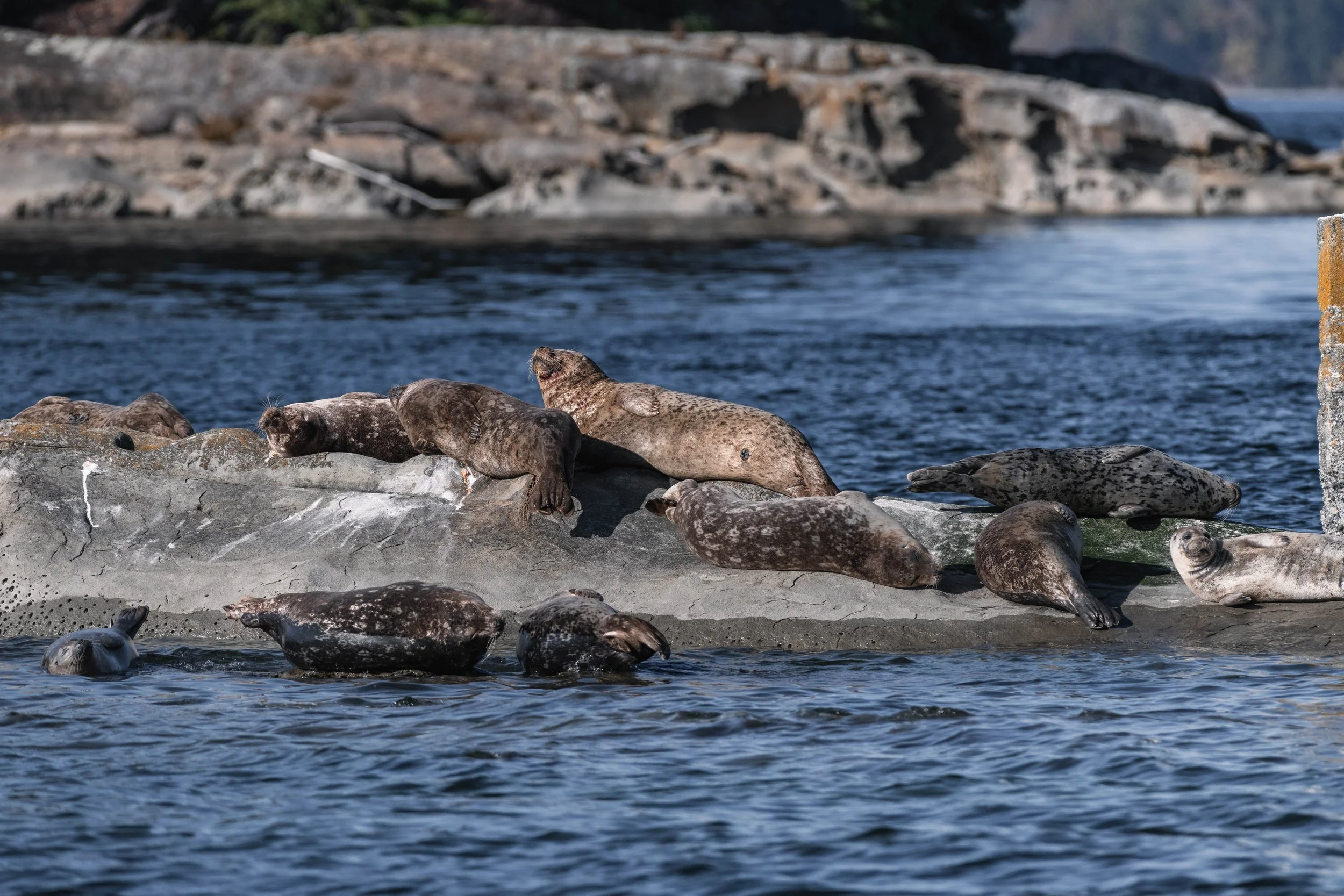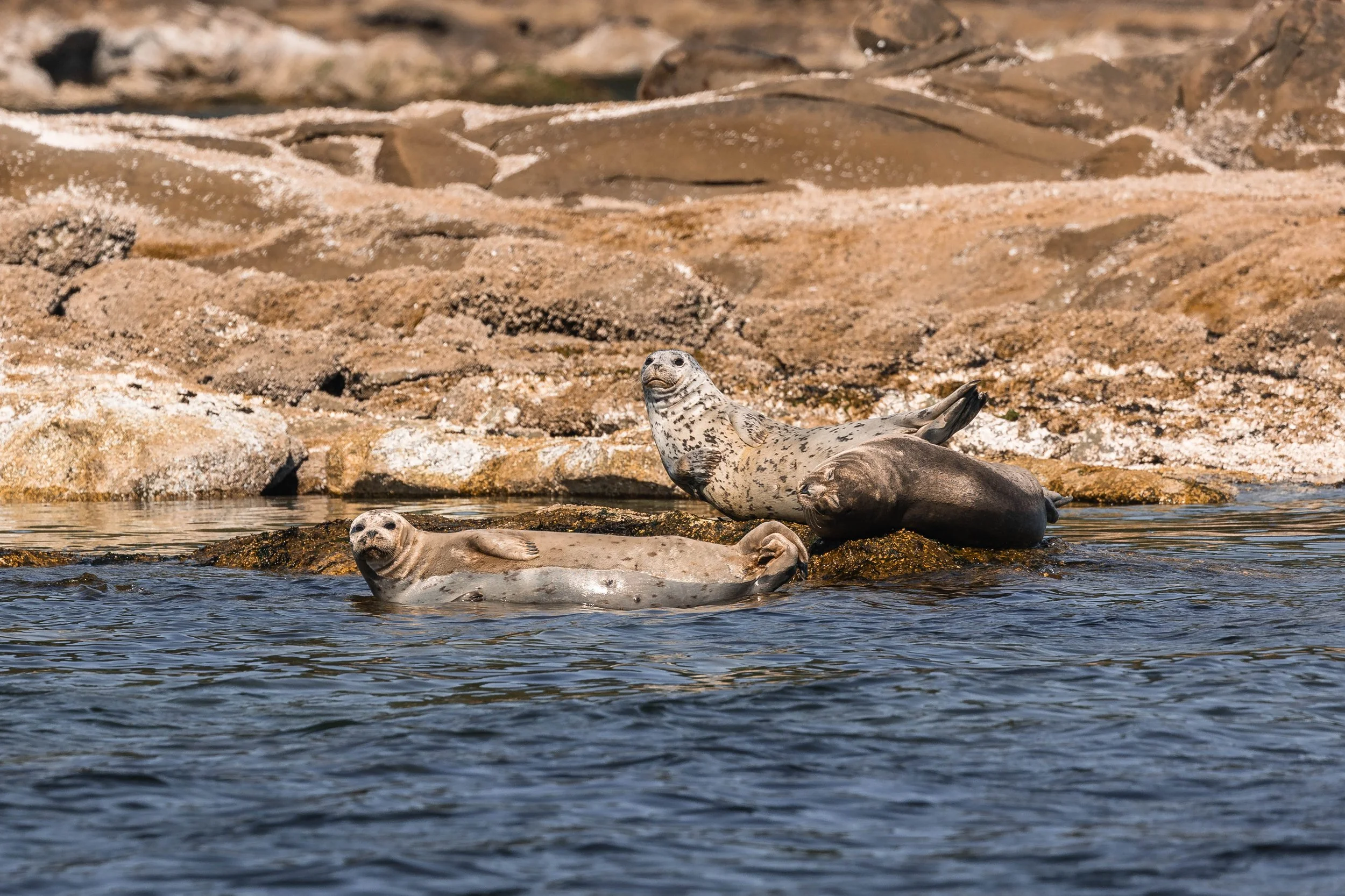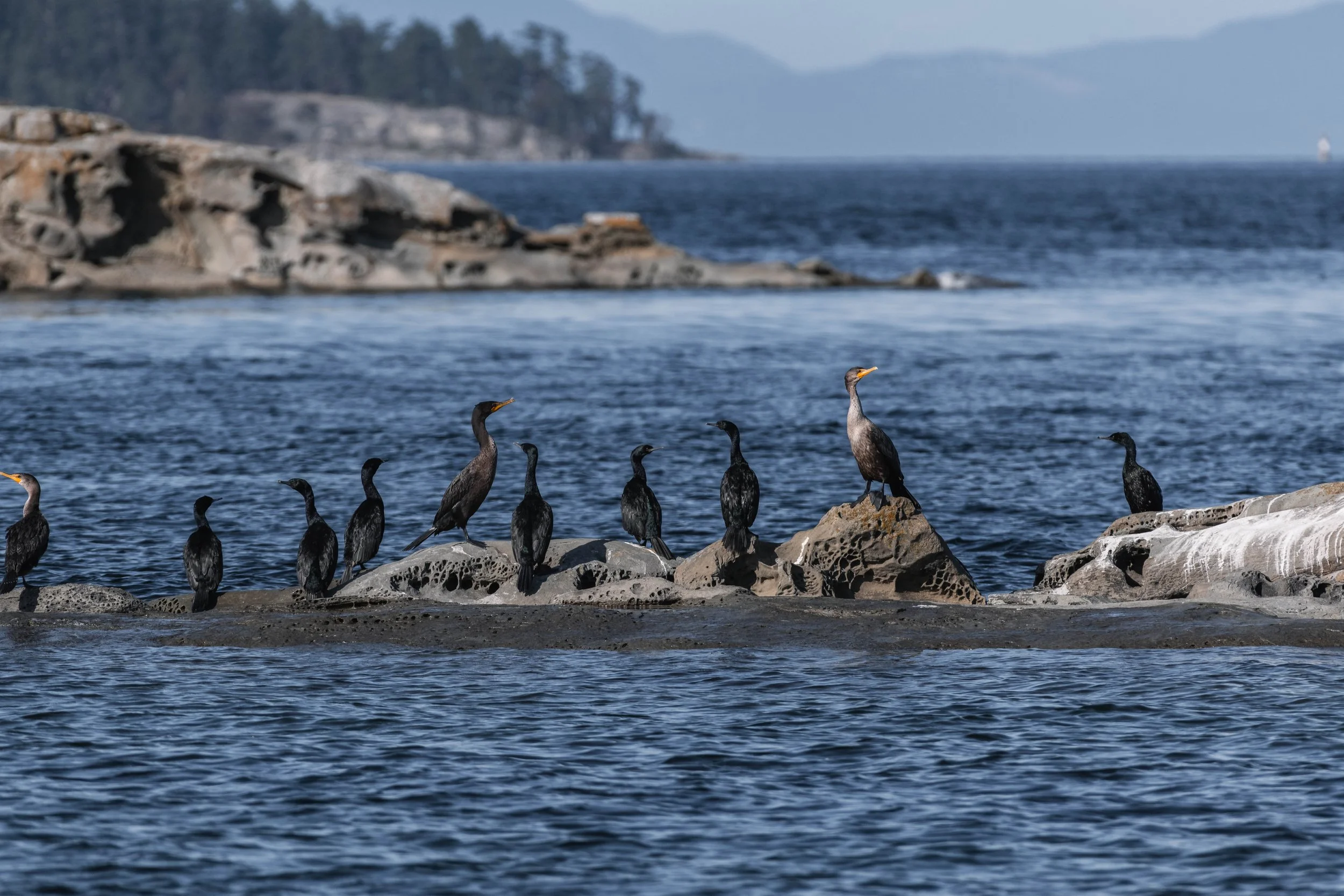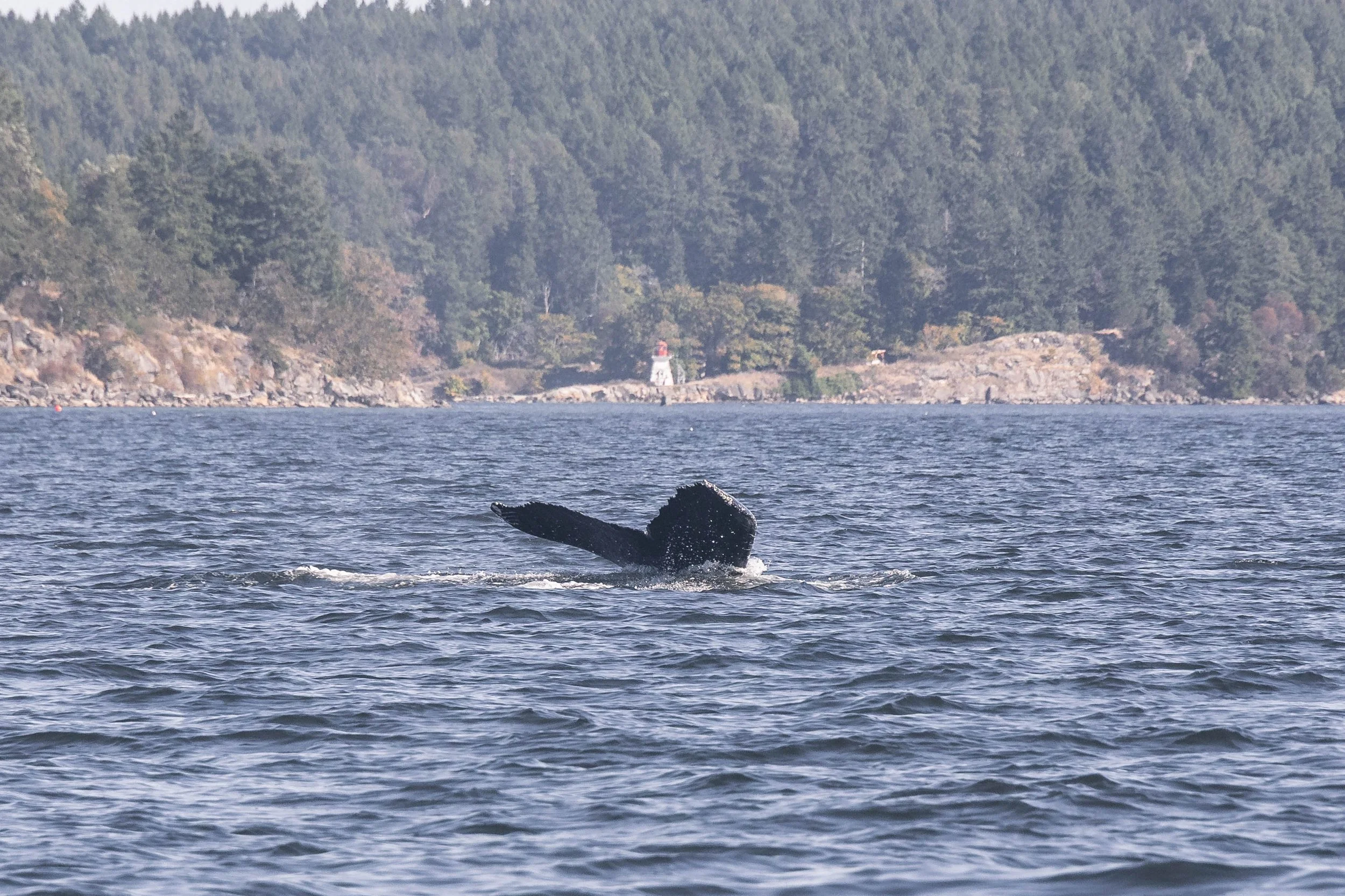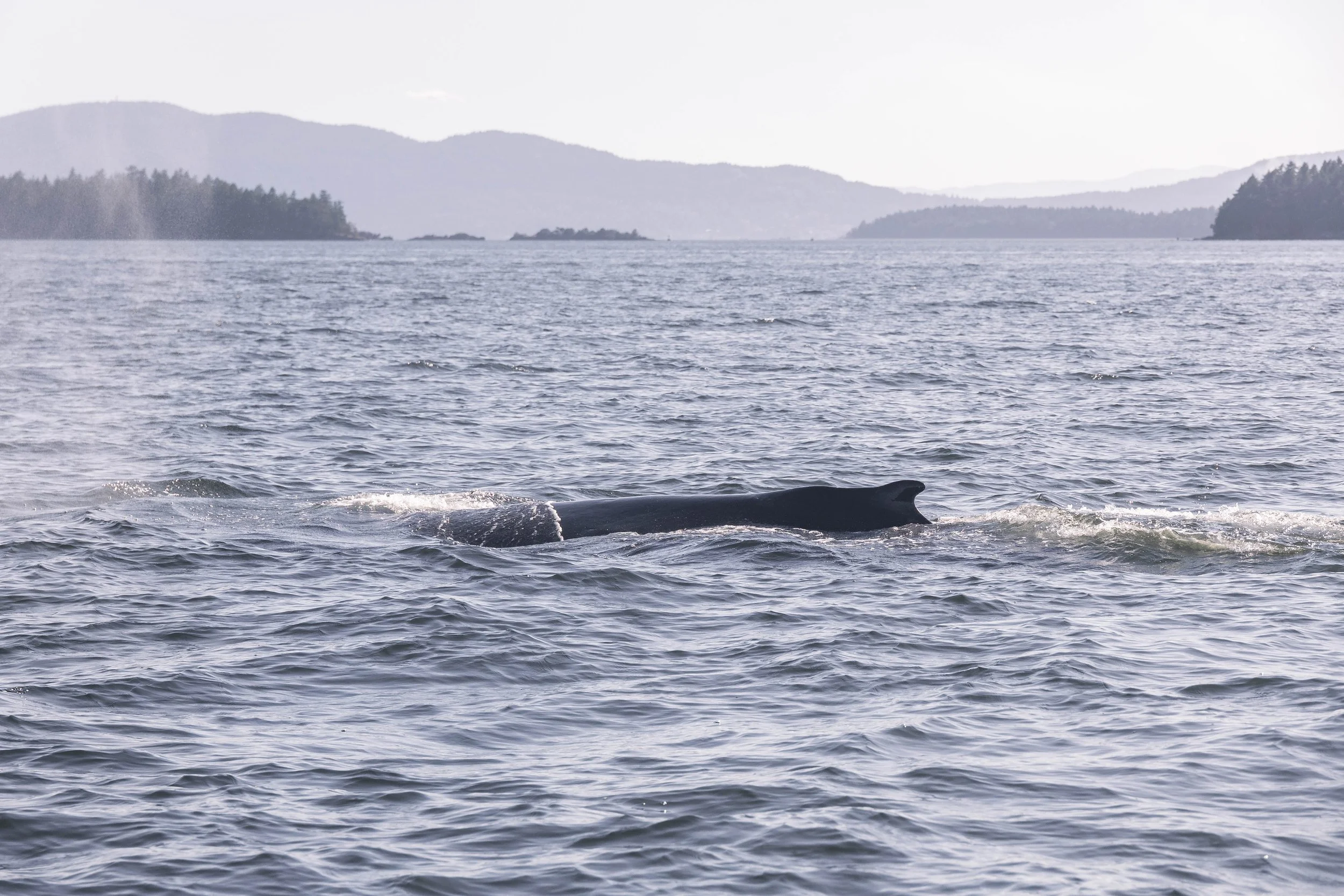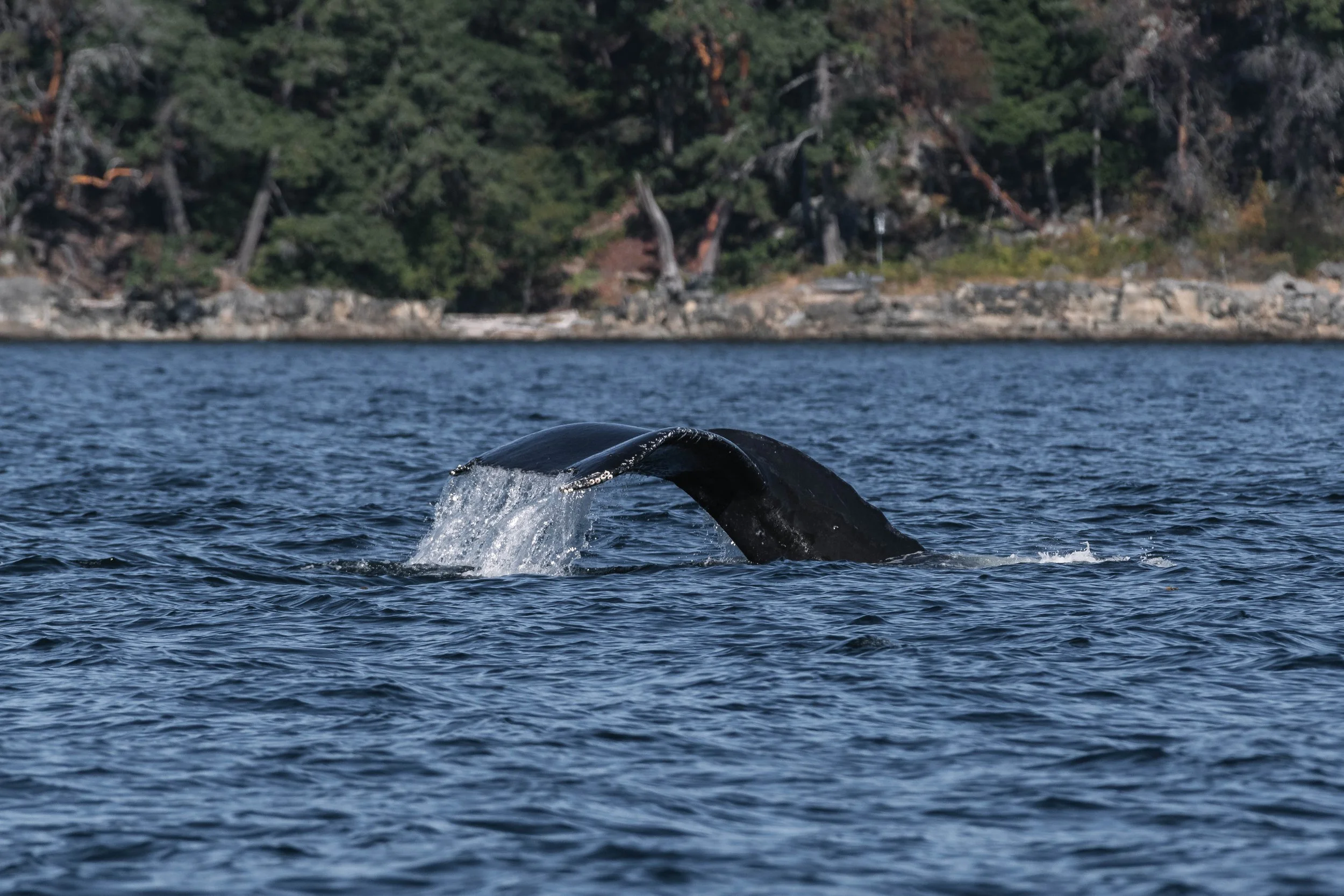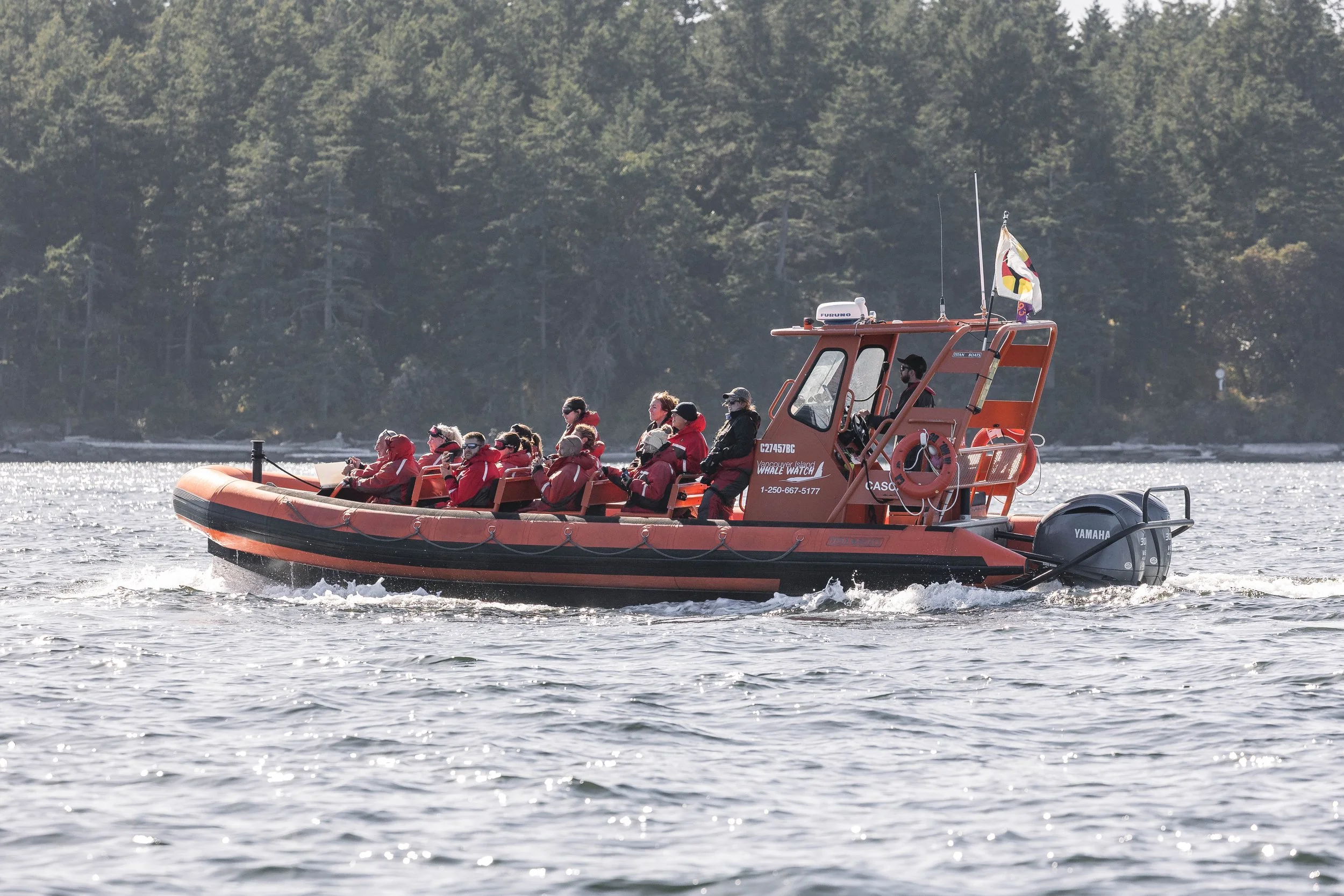September 18, 2025 - Humpback Whale "Chomper" in Trincomali Channel
A bright, sunny day greeted us as passengers and crew loaded onto three of our vessels, ready to begin their whale-watching adventure. We headed south, searching through the Southern Gulf Islands. Our journey took us through Dodd Narrows, a beautiful, narrow passageway between Mudge Island and Joan Point on Vancouver Island.
The tightness of this channel creates a tremendous current as the tide changes, reaching speeds of up to 9 knots! This fast-moving water mixes the water column, pulling oxygen-rich surface water down to the depths and pushing colder, nutrient-dense water up to the surface. This dynamic exchange supports an abundance of marine life usually found only on the outer coast of Vancouver Island, where open-ocean waves create similar conditions. Among the species thriving here are Giant Acorn Barnacles, Surf Anemones, and vast beds of Mussels. It’s an incredible place to explore, both above and below the surface.
Continuing south from Dodd Narrows, our vessels spread out to increase their chances of encountering something on their travels. Their search took them far and wide through the narrow channels between the nearly 300 islands and islets that make up this remarkable region. Along the way, there was plenty of wildlife to spot: seabirds floating on the water’s surface or flying overhead, Turkey Vultures soaring on thermals above, and countless fish leaping clear of the surface. In several spots, the round, curious faces of Harbour Seals could be seen as they rested on rocky shores or bobbed near the surface. Each vessel paused for a moment to enjoy these pinnipeds before continuing the search for whales.
Since whales in our waters aren’t tracked or tagged, we never know where or when we might encounter them, or even if we’ll find them, on any given tour. Observing whales behaving naturally in the wild is what makes whale watching so special, and sometimes, not finding them is simply part of the experience.
Luckily for us, just as those thoughts began to cross our minds, one of our boats spotted the telltale sign of a humpback whale: a large, bushy blow in the distance! We headed closer and soon saw more of the whale breaking the surface, travelling through Trincomali Channel, between Thetis and Valdes Islands. We watched as the whale surfaced several times, its distinctly hooked dorsal fin slicing through the calm water, before lifting its massive, nearly 20-foot-wide tail high into the air to begin a deep feeding dive.
The underside of a humpback’s tail, or fluke, is what allows us to identify individuals. Each whale has unique patterns of scars, pigmentation, and notches, much like a fingerprint. In this case, identification came quickly thanks to the distinctive rake-mark scars on both sides of the tail flukes: it was BCX2192, affectionately known as “Chomper.”
Chomper’s name comes from those very scars, which were likely left during an orca attack when they were younger. Orcas often attempt to drag prey underwater, targeting appendages such as the pectoral fins or tail flukes as their grip points. Many humpbacks bear such scars, but Chomper’s are particularly striking against the dark backdrop of their tail. If you’ve seen The Land Before Time, you might recognize the name; it’s inspired by the little T. rex who can’t help but chomp on everything! We often choose nicknames for humpbacks that help make their unique markings easier to remember, so you don’t have to dig through the catalogue every time you see them.
We spent a wonderful time with Chomper as they travelled through the islands before it was time to return home. Throughout the tour, our Marine Naturalists, Cheyenne Brewster, Aly Kohlman, and Hayleigh Hilbert, captured some fantastic photos. All of the best shots are included below!
A cormorant on top of the marker in Porlier Pass. Photo by Cheyenne Brewster.
A Harbour Seal on the lovely sandstone formations. Photo by Aly Kohlman.
Harbour Seals relaxing on the rocks. Photo by Aly Kohlman.
Curious Harbour Seals watching us as we pass by. Photo by Hayleigh Hilbert.
Relaxed Harbour Seals on the rocks. Photo by Hayleigh Hilbert.
Cormorants spending time on the rocks. Photo by Aly Kohlman.
A funny looking Cormorant squaking into the air. Photo by Aly Kohlman.
“Chomper” going for a dive. Photo by Cheyenne Brewster.
“Chompers” distinct dorsal fin. Photo by Cheyenne Brewster.
A lovely fluke waterfall from “Chomper”. Photo by Aly Kohlman.
“Chomper” surfacing in the waves. Photo by Hayleigh Hilbert.
“Chomper” preparing to dive. Photo by Hayleigh Hilbert.
The underside of”Chompers” tail as they dive. Photo by Hayleigh Hilbert.
Can you spot the rake marks on “Chompers” tail? Photo by Hayleigh Hilbert.
Whale Watchers onboard Keta. Photo by Cheyenne Brewster.
Whale Watchers onboard Cascadia. Photo by Hayleigh Hilbert.
Whale Watchers onboard Kula. Photo by Hayleigh Hilbert.


